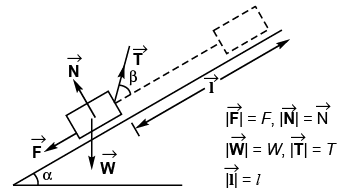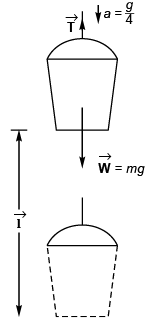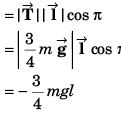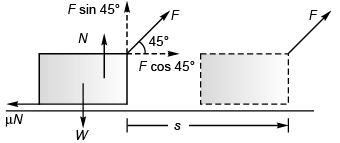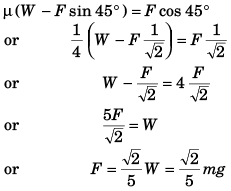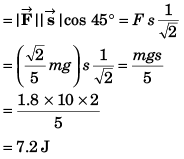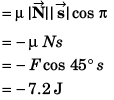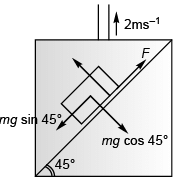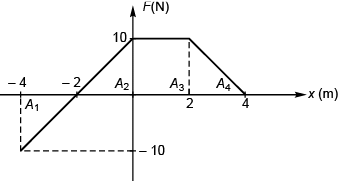DC Pandey Solutions: Work, Energy & Power - 1 | Physics Class 11 - NEET PDF Download
Introductory Exercise 6.1
Q.1. A block is pulled a distance x along a rough horizontal table by a horizontal string. If the tension in the string is T, the weight of the block is W, the normal reaction is N and frictional force is F. Write down expressions for the work done by each of these forces.
Ans. Work done by T= Tx, Work done by W = 0, Work done by N = 0, Work done by F = -Fx
Work done by
Work done by
Work done by
Work done by
Q.2. A particle is pulled a distance l up a rough plane inclined at an angle α to the horizontal by a string inclined at an angle β to the plane (α + β < 90°). If the tension in the string is T, the normal reaction between the particle and the plane is N, the frictional force is F and the weight of the particle is W. Write down expressions for the work done by each of these forces.
Ans. 
Work done by
Work done by
Work done by
= - Wl sin α
Work done by
Q.3. A bucket tied to a string is lowered at a constant acceleration of g/4. If the mass of the bucket is m and is lowered by a distance l then find the work done by the string on the bucket.
Ans: 
∴
Work done by string
Q.4. A 1.8 kg block is moved at constant speed over a surface for which coefficient of friction  It is pulled by a force F acting at 45° with horizontal as shown in figure. The block is displaced by 2 m. Find the work done on the block by (a) the force F (b) friction (c) gravity.
It is pulled by a force F acting at 45° with horizontal as shown in figure. The block is displaced by 2 m. Find the work done on the block by (a) the force F (b) friction (c) gravity.
Ans. (a) 7.2 j (b) - 7.2 J (c) zero
μN = F cos 45° …(i)
Substituting value of N from Eq. (ii) in Eq. (i).
Work done by force
Work done by friction
Work done by gravity
Q.5. A small block of mass 1 kg is kept on a rough inclined wedge of inclination 45° fixed in an elevator. The elevator goes up with a uniform velocity v = 2 m/s and the block does not slide on the wedge. Find the work done by the force of friction on the block in 1 s. (g = 10 m/s2)
Ans 10 J
F = mg sin 45°
Displacement of lift in 1s = 2 m
Work done by force of friction
Q.6. Two equal masses are attached to the two ends of a spring of force constant k. The masses are pulled out symmetrically to stretch the spring by a length 2x0 over its natural length. Find the work done by the spring on each mass.
Ans. 
Total work-done by spring on both masses
= PE of the spring when stretched by 2x0
∴ Work done by spring on each mass
Since the spring force and the displacement of masses are in opposite direction, work done is negative. hence, work done by the spring on each mass = -kxo2
Q.7. Force acting on a particle varies with displacement as shown in figure. Find the work done by this force on the particle from x = - 4 m t o x = + 4 m .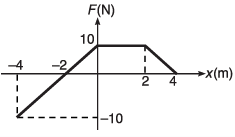
Ans: 30J
Work done = Area under the curve
= A1 + A2 + A3 + A4
= 30 Nm
|
96 videos|367 docs|98 tests
|
FAQs on DC Pandey Solutions: Work, Energy & Power - 1 - Physics Class 11 - NEET
| 1. What are the formulas for work, energy, and power? |  |
| 2. How is work related to energy? |  |
| 3. What is the SI unit of power? |  |
| 4. How is power calculated? |  |
| 5. What is the principle of conservation of energy? |  |












